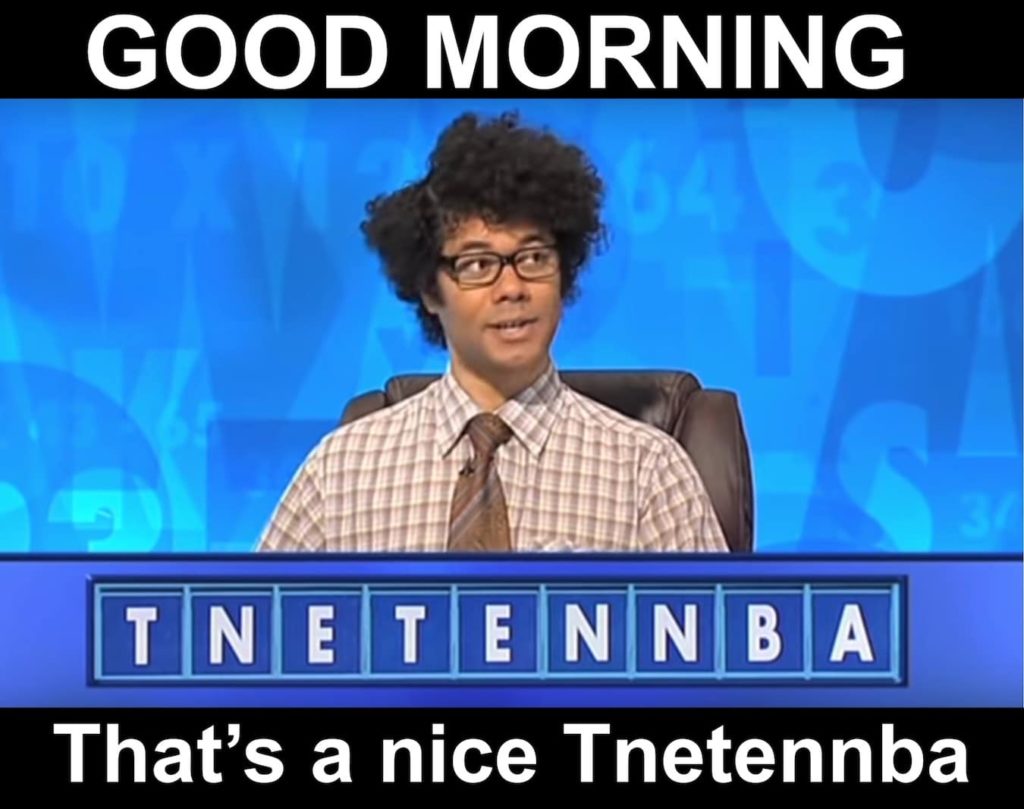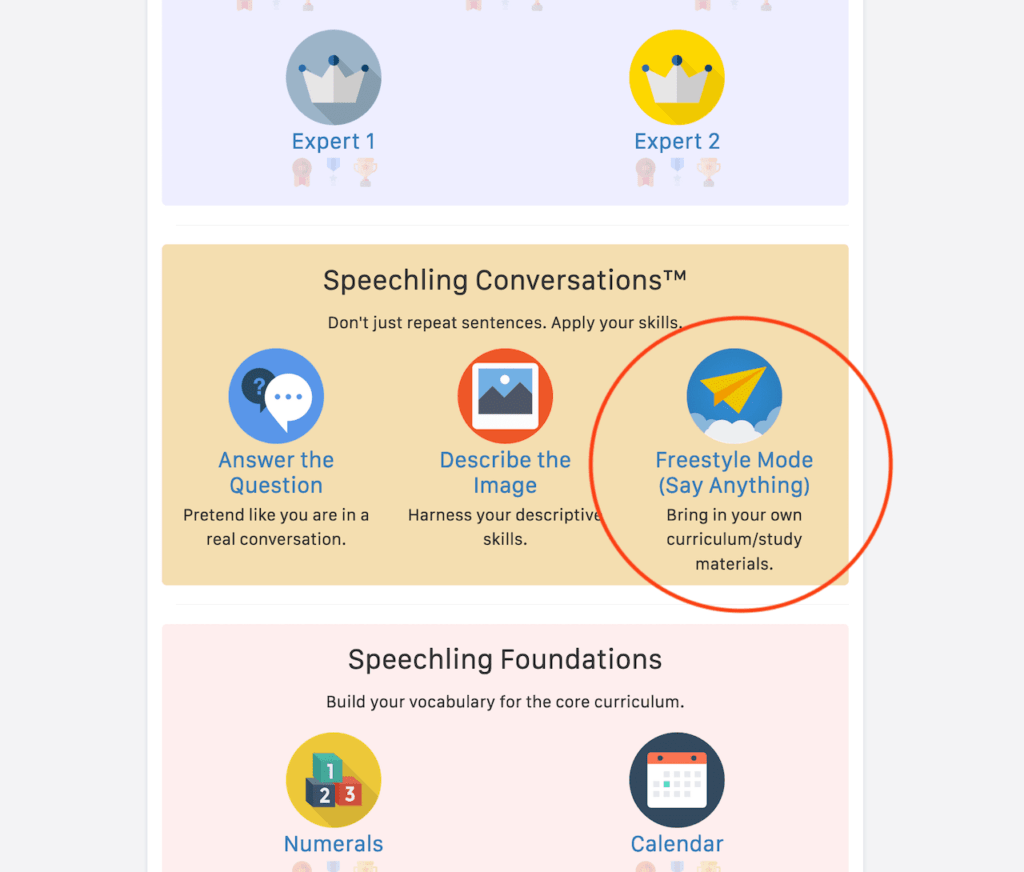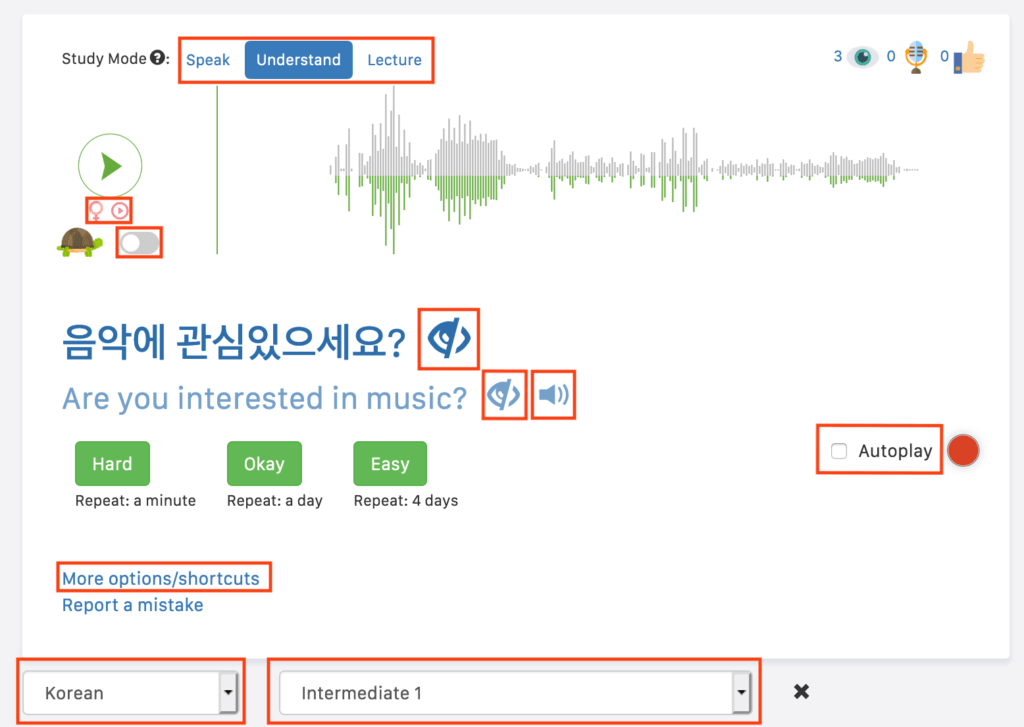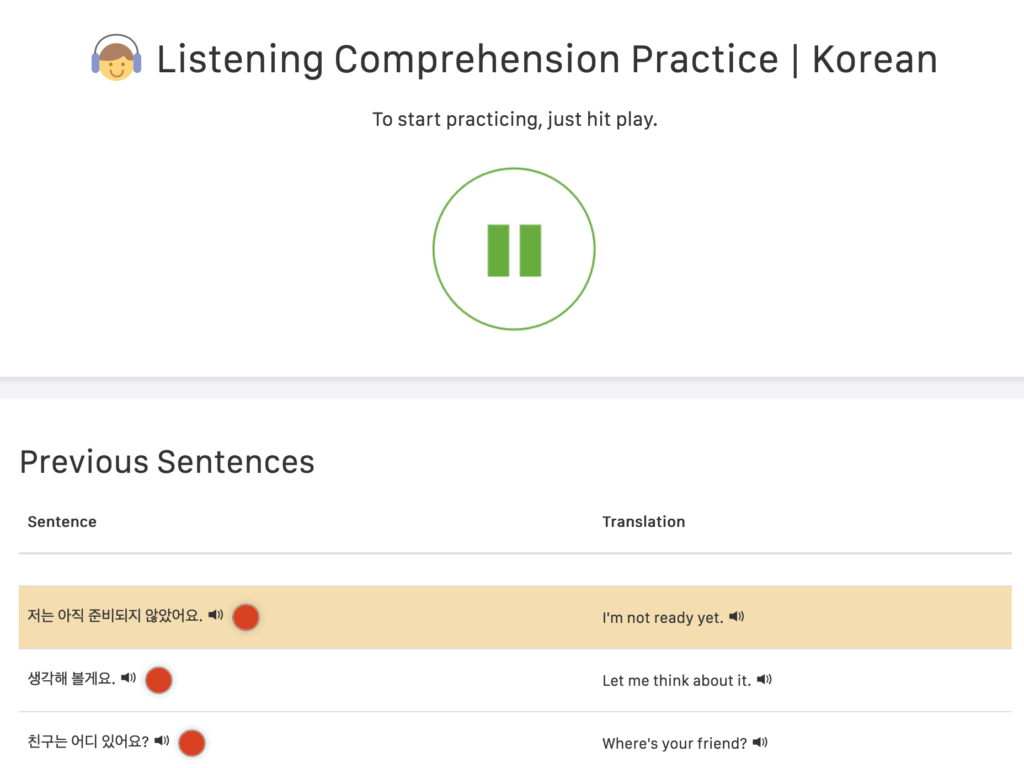A Year With Speechling — The Best Sentence Bank. But Is That All You Need?
This is my Speechling review after over a year of using it in various ways. Like every app, it’s not a panacea — but it’s super cool, the price is right, and I love the company (an educational non-profit).
So is Speechling worth checking out? Yes. Here’s why.
In early 2020, I spoke to Hongyu Chen (or Chen Hongyu if you say his name the Chinese way) of Speechling, a language-learning app whose aim is to democratise language learning.
To make language learning available to more people, Speechling is free for most users. You can do an unbelievable amount for free. And if you pay the small amount that membership costs, you get much more, and you’re also helping other people get language tuition for free.
How does this work? Well, a bit of magic. I’ll try to go into it in detail.

Disclaimer and integrity statement: These views are personal. Buying Speechling via this site may earn us a commission. But we try to keep objective. We only recommend things we genuinely love, including free things (most of Speechling is free!), and don’t recommend just things that would have made us money — like most apps! That’s how we’re different from many other sites.
Sign up for Speechling
Get access to all the sentence banks and 35 coaching sessions a month for free. Get offline use and unlimited coaching for $20 a month.
Speechling Review in a Nutshell — 10 things we love (and a couple we don’t)
We’re not really into new apps for language learning. We have a whole post about it!
But despite that — I really enjoy Speechling. For sentence banks, it became my favourite, bumping Glossika out of rotation.
(Want to read about our other favourite? This is our full Glossika review.)
Speechling combines some elements of what I used to love about Pimsleur (which I used to borrow from the library for free), adding in the sentence bank richness of Glossika (plus more), and making the app super easy to use and customisable — for free. It’s crazy good.
Here are the 10 things we love about Speechling — and a few things thing we don’t — in a nutshell.
- It’s totally free for most features (and thus most people).
- You get feedback from a real, human tutor, for free (or for a low cost at a higher volume) — mind-blowing.
- The business is a non-profit, with the goal of democratising education (particularly for English language learners)
- The app is really slick. It feels like a really modern web app. (The geek in me suspects it’s built on React JS and React Native, though I forgot to confirm this!)
- You can learn 11 languages, including some variants, and the interface changes based on your target language. And there are more languages to come!
- There’s a full curriculum from which to learn — you’re not just learning random sentences
- You can get teacher feedback your own sentences that you’ve learned from anywhere — even ones you make up yourself!
- You can customise a lot of stuff — like whether you’re shown phonetics, auto-play, etc..
- There’s an automatic hands-free mode called Listening Practice mode.
- The sound and translation quality is excellent. It’s never muffled, and the translations seem accurate
- You can download offline content in Anki decks and just straight audio files for listening
- You can search through the content to find example sentences.
And a few things we don’t like so much about Speechling…
- There’s no clear course to take you from beginner to advanced. This is what sophisticated apps and courses do — they’re a lot more thoughtful in their content.
- If you’re anything other than a total beginner, you might not know how to place yourself.
- You’re left guessing grammar rules — which are usually not obvious.
- The Speechling interface is a bit complicated and hard to know where to get started or if you’re using it as efficiently as possible.
All in all, I think this is a wonderful app. It’s the best sentence bank app I’ve seen yet. And the price is right.
Some of our favourite languages aren’t there yet. But that’s not a complaint, just an observation of Speechling’s state of evolution, and the care that they give adding new languages.
I recommend it in a heartbeat if your language is one of the languages on the list.
Become a Language Discoverer
Like learning languages and building bridges with other cultures? Sign up to our email list. We don’t send spam unless you’re Korean and so like spam.
How I use Speechling
This is how I use Speechling. Since starting using it in early 2020, the way I use it has changed over time.
The three ways I have used it include
- Using the standard spaced repetition interface
- Listening mode, sometimes downloading mp3s
- Downloadable Anki decks
- Search
I started out using the app and its internal spaced repetition system to try it out and to be able to write about it. That’s fine, but because I have a mix of languages I’m learning in different ways, I adapted my style quickly.
Sometimes, if I’m feeling lazy, I just put it on “listening mode“. This works fine as long as I have a steady internet connection, so I can’t use it e.g. while going for country drives.
I then found out about the downloadable content. I tried the mp3s, but what I really like is the downloadable Anki decks. I download those, and then I adapt and change the content to put it in my own Anki decks. I use that for Korean and German, my side hustle (a language I do for fun, chipping away at it over time).
I also really like to use the search function in Speechling to look up how to use words. It’s very useful, particularly in Korean and Chinese where it’s easy to look up a word (because conjugation doesn’t fundamentally change the word).
The above is just a snapshot of how diverse Speechling is as an app. There’s a lot you can do beyond just using the standard spaced repetition interface.
A bit about Speechling — The Company
The first thing I want to mention is that most content on Speechling is free, and it’s a non-profit.
The founder, Hongyu, was born in China. His family migrated to the US when he was young. In the US, he had to learn English, and later Spanish in school.
Hongyu’s goal in building Speechling was to provide others with the tool that he wished he had growing up — for free.
Thus, people can access most of the content for free. If you want extra tuition you can pay to get unlimited access to a professional tutor for $30 a month. Just $30 a month! Given that italki costs around $7-10 an hour for a good tutor (depending on the language), this is excellent value.
Given the opportunities that knowing English can give you, Hongyu’s mission to have an impact on the world is noble, and well underway.
By the way, you might be wondering: “How can Speechling survive as a non-profit?” Well, according to Hongyu, the company only took 6 months to reach break-even from their first launch.
As of 2020, they had over 80,000 users worldwide — mostly free, but a (confidential) good number of them paying, according to Hongyu. Speechling has a team of 20 people (mostly language coaches, doubling up on some popular languages) all over the world.
Speechling pays its employees salaries as well as for re-investment into adding more languages. So… the answer is — Speechling isn’t just surviving, but thriving.
They’ve also started offering platforms for schools — which they offer at cost. I’m really impressed.
How do you learn languages with Speechling?
At its core, Speechling is a sentence bank application (with a few additional awesome features). There are many thousands of sentences in there. If you’re learning Korean, like I am, you can learn Korean via English. You can also learn Korean via any other language in the system.
I really love sentence banks. For me, context helps me learn a word so much that sometimes, I can only remember a word by remembering a full sentence.
There’s an emerging body of knowledge in language philosophy that says that words have no meaning, and that we only ascribe to them meaning in context.
Without going into that in detail (it’s a big subject), it’s clear that we use some words in a fixed number of sentences.
Take “appointment”. There are only a few practical sentences you need to learn with this word. You say things like “I’d like to make an appointment” or “I need to cancel my appointment”. But you’d never say “That’s a very interesting appointment” or “I’d like a lettuce, tomato, and appointment sandwich”. So why learn those sentences?

“Sure… Good morning, that’s a nice Tnetennba“
Even though you get access to a tutor through Speechling, it’s not like doing a language lesson. It’s quite different.
The tutors are there to correct your grammar and pronunciation.
Primarily, as you go through the material and learn sentences, you have the option of sending each recording of a sentence to a tutor for review.
When you do this, some hours (or a day, maximum, in my experience) later, they’ll respond to you telling you how to improve — or just telling you that you did a good job. 😇
So at its core, you use Speechling by learning to understand sentences and repeating them back.
But is that it? No! You can also make your own sentences and send them in for review.
The benefit of human reviews
Speechling is an app that gets you to record your voice so that you can be reviewed by a real human.
This means my tutor, who is a native Korean speaker, listens to my voice. She then re-records the sentence in her own voice (if it’s a custom sentence), and even gives me commentary on my pronunciation and grammar.
I love this feedback. I love it because it’s just one step short of a live, natural conversation with a tutor, what I pay for on italki.
Other apps get you to record your voice. They’ll either then try to compare your voice to the recording digitally (Rosetta Stone), or they’ll just send it mysteriously into the either (Glossika). I’ve never really thought that was of any use. Speechling is the first app to do something actually useful with human reviews.
With the free version of Speechling, you get 35 reviews a month — to me that number says “enough so you have one a day, with a few to spare). It’s not very many, and I honestly barely use them. I’m at an intermediate level in Korean, which means I’m confident in my pronunciation (Jo says “I understand what you’re saying these days, it sounds like Korean!”… which apparently it did not, before), but mostly have trouble with grammar and fluency. But if I were studying Korean full time, I’d probably review 20 sentences a day, writing down new sentences and getting my teacher to tell me how to say them better.
Using 35 reviews a month to help a beginner get settled is a great start, though. Try it!
How Speechling is organised and where to start
At first blush, Speechling is pretty complicated. I must admit, it was hard to figure out where to start.
There are three main sections: Study, Toolbox, and Skill Tree.
Loosely:
- Study is where you learn new sentences in either Speak, Understand, or Lecture mode
- Toolbox is where you can use a number of cool tools to aid your study, like Listening Practice, Flashcards, or Fill-in-the-Blank, and a couple of others.
- Skill tree is where you select your level, or the topic you want to study, or do things like Freestyle mode.

The first place to start is Skill Tree. You select what you want to study — for example a level like “Beginner 1” (it goes from 1-3, with Intermediate 1-3, Advanced 1-3 and up to “Expert 2”), or a topic like “Nouns” (pretty broad topic!) and start studying.
(Note: I’d skip “Nouns” and “Verbs”. I find learning words in isolation nowhere near as useful as the sentence bank that, at its core, Speechling provides.)
Once you select a skill, it’ll take you to the Study page by itself automatically. There, you’re presented with a word and told to say it in another language, recording yourself.
A few common questions:
- Do you have to record yourself? No. Recording yourself does help with active study, and you can get the tutor to review your pronunciation. But you don’t have to.
I personally mostly use Understand or Lecture mode. “Lecture” really just teaches you the material. Because I’m an Anki fan, I mostly learn through Lecture mode and then add the most important sentences to my Anki deck.
Does Speechling work?
The question many people have about any language-learning app is: can you get fluent with it?
I.e. after spending hours/days/months with Speechling and learning sentences in any of its target languages, will you be “fluent”?
Firstly, I haven’t used it for that long. I’ve just been using it for a month.
But that said, I don’t think that any tool or app can get you fluent on its own. Fluency really comes from doing the thing you want to be fluent in. If you want to “fluently” converse with people, read newspapers, or watch TV shows, then you need to do those things. That was the point of our post “Learn languages with books, not apps“.
With that to one side, Speechling does work for its stated intent: to teach you sentences.
Studying the curriculum every day and doing exercises has helped me learn the sentences, analyse how they’re built (and how they express the thing I want to say), and internalise them by drilling them in.
Further, getting custom sentences reviewed with a tutor has given me the confidence to use them.
Get your Sentences Reviewed — Speechling’s Freestyle Mode
One of the coolest parts of Speechling is its “Freestyle Mode”.
Freestyle mode is a place where you can get any sentence reviewed. This means you can make up sentences in your target language and record them for your tutor, who’ll give you notes on grammar and pronunciation!
For example, I really want to know how to say the sentence “I didn’t want to go to the gym today, but it was too late to cancel my class.”
In Korean (at my level) this is “오늘 아침에 체육관에 가고 싶지 않았지만 수업을 취소하면 너무 늦었어요”.
Then I have to find the Freestyle mode. It seems to move around, or maybe I keep losing it. But on the browser app, it’s midway down the Skill Tree page.

Once you’re there, it’s super easy to use. You
- Type what you’re trying to say (in English, your target language, or both), then
- Record yourself saying it (in the target language)
I did this, and within about four hours, I got feedback.

She said “You said it correctly, but if you put a pause after the word ‘morning’, it will sound more natural.”
With this feedback, I feel comfortable putting this sentence in my Anki flashcard deck. Awesome!
About the Speechling App(s)
A small note on the app(s), including the web app — they’re really slick.
This is not a casual comment I make. I’ve made apps and have worked in pretty app-centric companies. We know the value of good apps.
Duolingo would have to be my favourite interface for a language-learning app. It leaves most other apps behind — compared to Duolingo, most apps are ugly, slow, and complicated.
The only exception to apps that can’t keep up with Duolingo is Speechling!
The web app, Android phone app, and presumably iPhone app (we don’t have one in our armoury now) are all great.
This is a stark contrast to Glossika, which lacks phone apps and whose web app experience on the phone is terrible, and has been for years (since I first started using Glossika in 2018).
Languages you can study with Speechling (11 as of mid-2020)
With Speechling, you can currently study 11 languages.
- English (both US and UK variants)
- Chinese (Mandarin, in both traditional and simplified)
- Spanish (of Spain or of Latin America)
- French
- Italian
- Japanese
- Korean (that’s what I’m testing it on)
- German
- Portuguese
- Russian
So that’s quite a decent portfolio of languages, including European, Slavic, and Asian languages.
What’s really interesting about Speechling is that for every language they add, they add a whole new interface. Every button, drop-down, and prompt also changes language. So it gets exponentially harder to add new languages as the app becomes more sophisticated.
The one major world category of languages not present are right-to-left ones — most notably, Arabic (and one of my hobby ones, Hebrew). Adding Arabic is no easy feat. It would mean a whole interface redesign. After adding Arabic, I’d like to request Persian, my mother tongue!
Speechling Customisations
One of my complaints about most language-learning tools like Pimsleur or Glossika is the lack of customisability.
That’s what drove me to Anki. Basically, I always want to tweak something, like
- Whether the answer shows me the native text, phonetics, or both
- Whether I’m prompted by English or the target language
- Spacing between sentences
- Whether the answer is repeated
- Going “hands-free” and letting it auto-advance
- Studying stuff without it counting as a flashcard review (something you can do in “Listening Practice” mode)
Imagine my shock to realise you can do all these things in Speechling — and more.
Look at this screenshot. These are all the things you can change on the fly.

I didn’t even realise until now, making this graphic for this Speechling review, that I could change the gender of the voice on the fly!
And there are even more options in the “more options” section, like adding shortcut keys or adding a card to favourites.
Sound and translation quality — Great
One thing worth pointing out is that the sound and translation quality is great.
I’ve been through a few hundred sentences in Speechling so far, and I haven’t noticed any translation errors.
In Glossika, the sound quality is great, just as it is in Speechling. But there are obvious translation errors in Glossika. I mean “obvious” like “obvious even to a learner”. The kinds of errors I found in Glossika were a long sentence involving multiple part would have a translation of only one part. (E.g. “Where is the bank? I need to go there.”) would only have a translation for “Where is the bank?”, randomly either audio or text.)
Errors are inevitable. We make mistakes in this blog, typos for example, or translation errors, despite going over our work many times. I’m forgiving of Glossika for those mistakes.
But I still have to point out that Speechling seems a cut above in a) the lower quantity of errors, and b) their claimed responsiveness to errors. That Speechling has done this despite being around for less time and with more recordings is remarkable.
I’ve only reported one error in Speechling. I actually think it was a data caching issue — as it was the first audio that played after I opened the app after a couple of days (and it didn’t match the text). I haven’t heard back, yet. I’ll add to this Speechling review when I do.
Listening Practice — My favourite mode
I like to go for a walk in the mornings and study while I walk. It’s not a very intense walk (I save that for the gym, or when I’m running occasionally), so I like to double up by studying while I go.
Usually, I flip through Anki cards. Because I record my own voice while using Anki I only have to look down at my phone about 10-20% of the time, meaning I can stay engaged with the world.
But “Listening Practice” mode in Speechling while testing it out for this Speechling review changed that.

Listening comprehension mode in Speechling plays back sentences from the level you’re in.
My favourite way to use it is to set it to
- Say the sentence in 1. target language, 2. English, then 3. target language again
- Randomly say sentences from the level I’m studying — even if I haven’t heard them yet
It’s a really great way to passively absorb a language and be coached in it!
There’s some kind of spaced-repetition algorithm in this mode as well. I am not sure how it works; I just noticed that if I hear a sentence, I hear it again fairly soon — even though there are hundreds of sentences in each level.
Things we’d like to see improved in Speechling
No review is all roses! Here are three things we’d like to see improved in Speechling.
I don’t mean to be picky in this Speechling review. Speechling has a talented group of editors, teachers, and programmers… and I have huge respect for the company. But it’s because I respect them so much that I know they can react to suggestions and incorporate feedback into their development pipeline, prioritising as needed.
So here’s my personal perspective on whether Speechling is useful.
Overall, Speechling is good as a sentence bank. But my main problem with is it that sentence banks don’t have structure, context, or personalisation.
Up to the intermediate stages, language learners need some kind of structure. You need to learn “hello” and other basic greetings, and then repeat them hundreds of times in different ways.
Sentence banks don’t teach you grammar rules. Some people don’t study grammar. But not studying grammar works best when you can follow your curiosity, like when learning “I want water”, asking “So, how do you say ‘Do you want water?'”, and observing the differences.
As an adult, we have an advantage in that we can internalise rules and exceptions. I use rules all the time even as an advanced/native English speaker and writer, observing rules like preferring the “Oxford comma“, using em-dashes where appropriate, and eschewing double spaces after periods (a pox on the house of anyone who does this!). ← Seriously, this is what it looks like to me.
See more about learning languages as an adult.
Finally, sentence banks (Speechling or otherwise) aren’t personalised. You need to learn to describe your life and surroundings. I don’t want to repeatedly learn to say I’m an American businessman (as Pimsleur is wont to teach you) if I’m actually a literature student from France or an economist from the UK.
Aside from those things, let’s talk about Speechlint specifically.
The app is a bit complicated. It hasn’t changed in the years I’ve used it. It’s hard to know where to get started or if you’re using it as efficiently as possible. This is solved by me saying: “Go to the skill tree”.
Speechling sends out some emails to help you get started. What I’d really like would be some tips specifically for me, to help me find the right skill level or options to choose. Like, “Do you want to focus on comprehension? Do this.”
I don’t say “complicated” lightly. Like most of Speechling’s users, I’m no dummy. But like a lot of people, I’m time-poor and using apps because I’m trying to optimise my life. Help me a little more, guys!
Related to the above, when getting started using Speechling, it’s hard to know what level I am. I flatter myself to think I’m “intermediate” in Korean. I figured out I was somewhere there by listening to the sentences. But what I’d suggest is a feature like what Glossika has near the beginning where they give you a test and place you in the appropriate level. (This is one thing where Glossika is doing it better. Pay attention!)
And aside from those things, we’d love to see more languages. I know they’re coming. I’ll be an avid tester/user of the Persian and Arabic ones, for sure!
Speechling Pricing
Saving the best of this Speechling review for last — you get a lot of value out of Speechling for free. Nada. Zip. (Well, you do need to sign up with an email address.)
What you get for free from Speechling:
- Unlimited access to all the sentence banks and categories
- Use of mobile apps
- 35 coaching sessions (sentence reviews) a month
- Study of one language (you probably should be only studying one language at a time, anyway!)
What you get when you pay (currently $20 a month, but check their pricing page)
- Unlimited coaching sessions a month
- Switching between languages at any time — I haven’t even tried this!
- Everything offline on your phone






